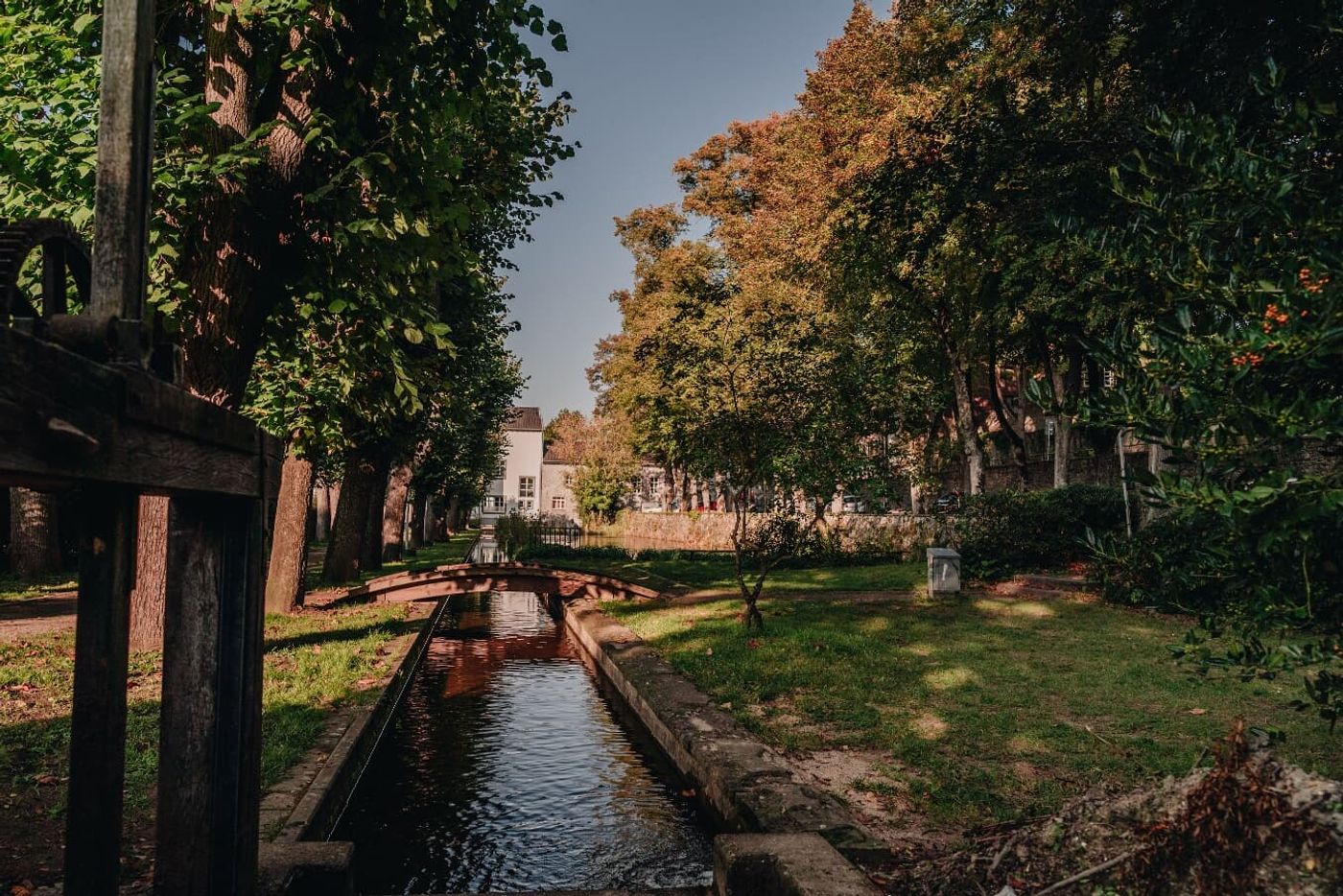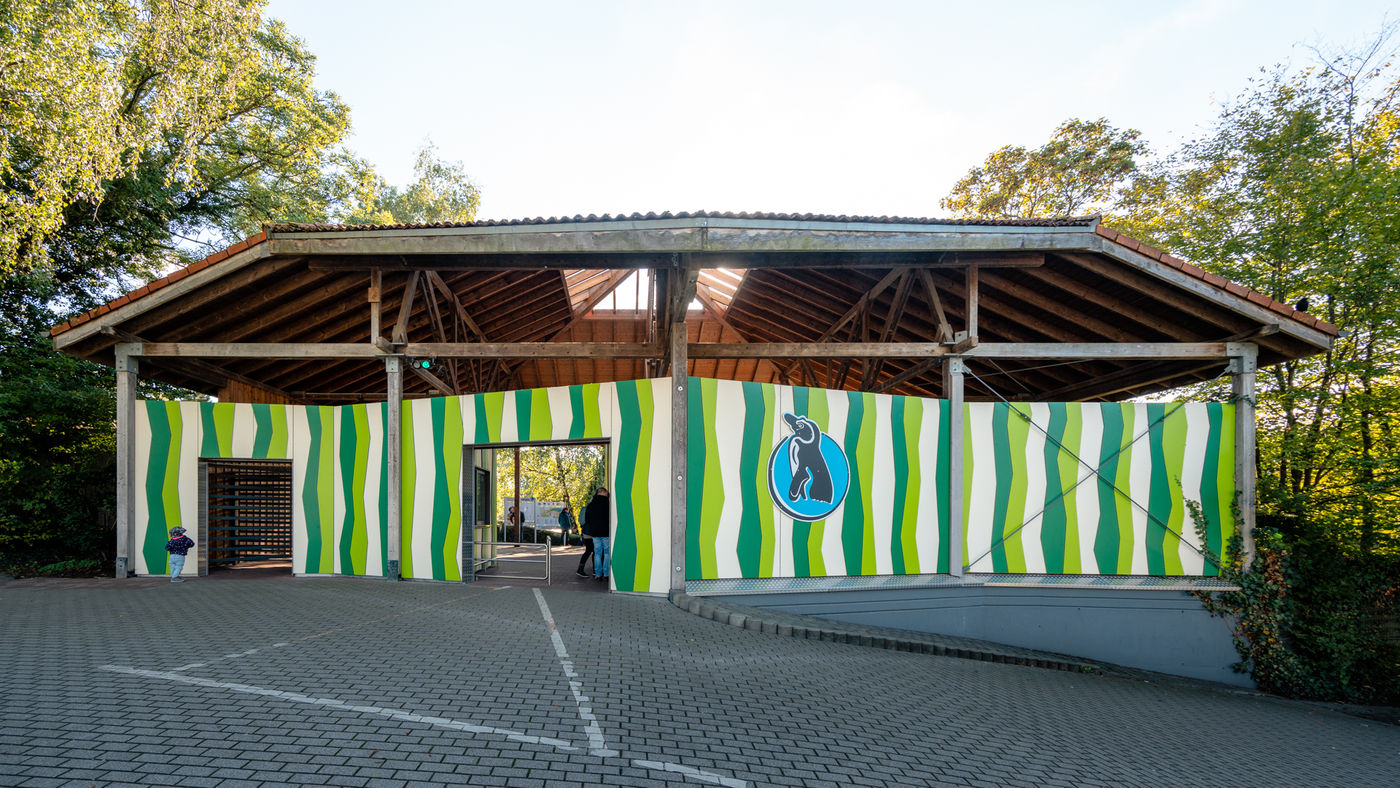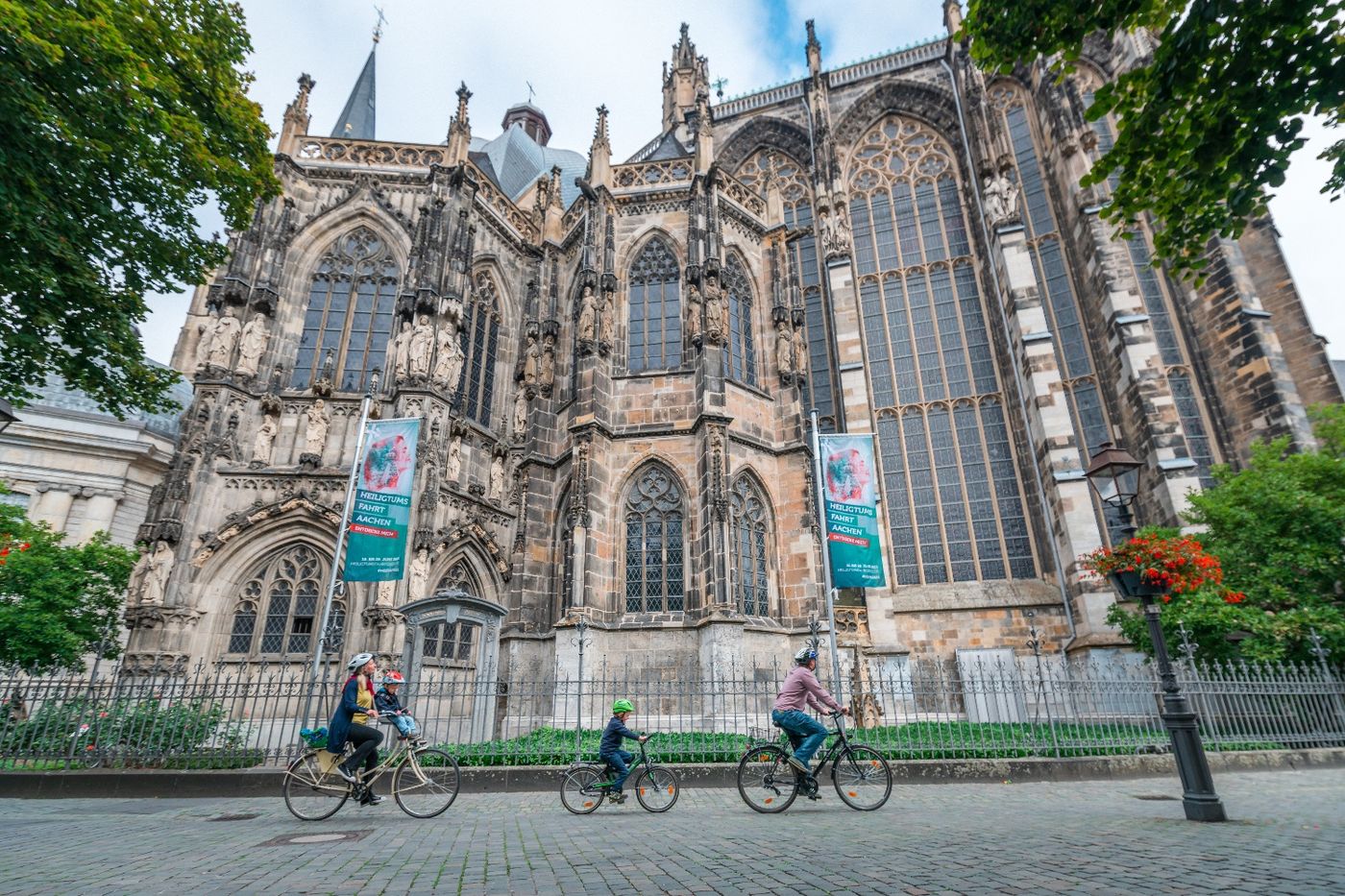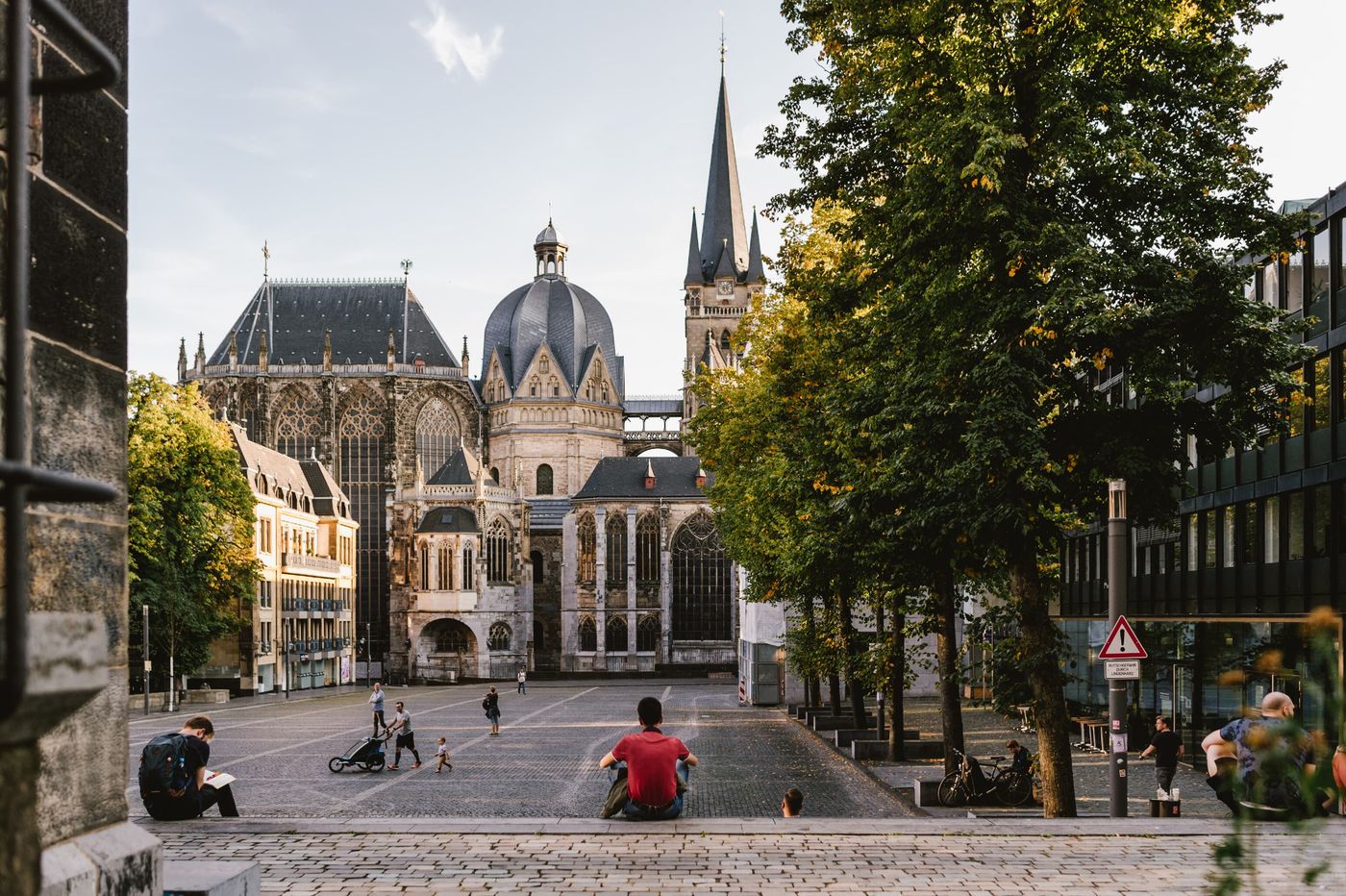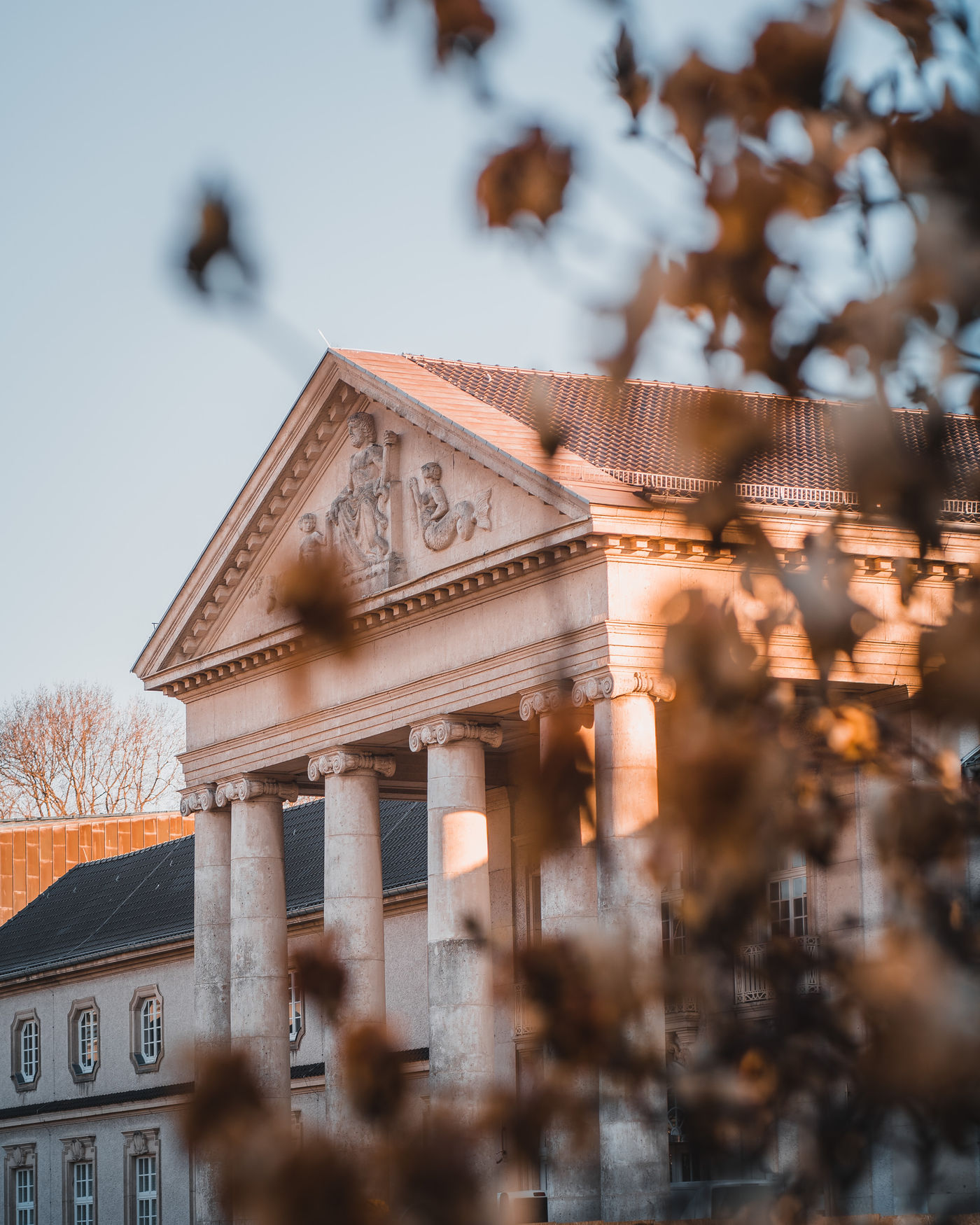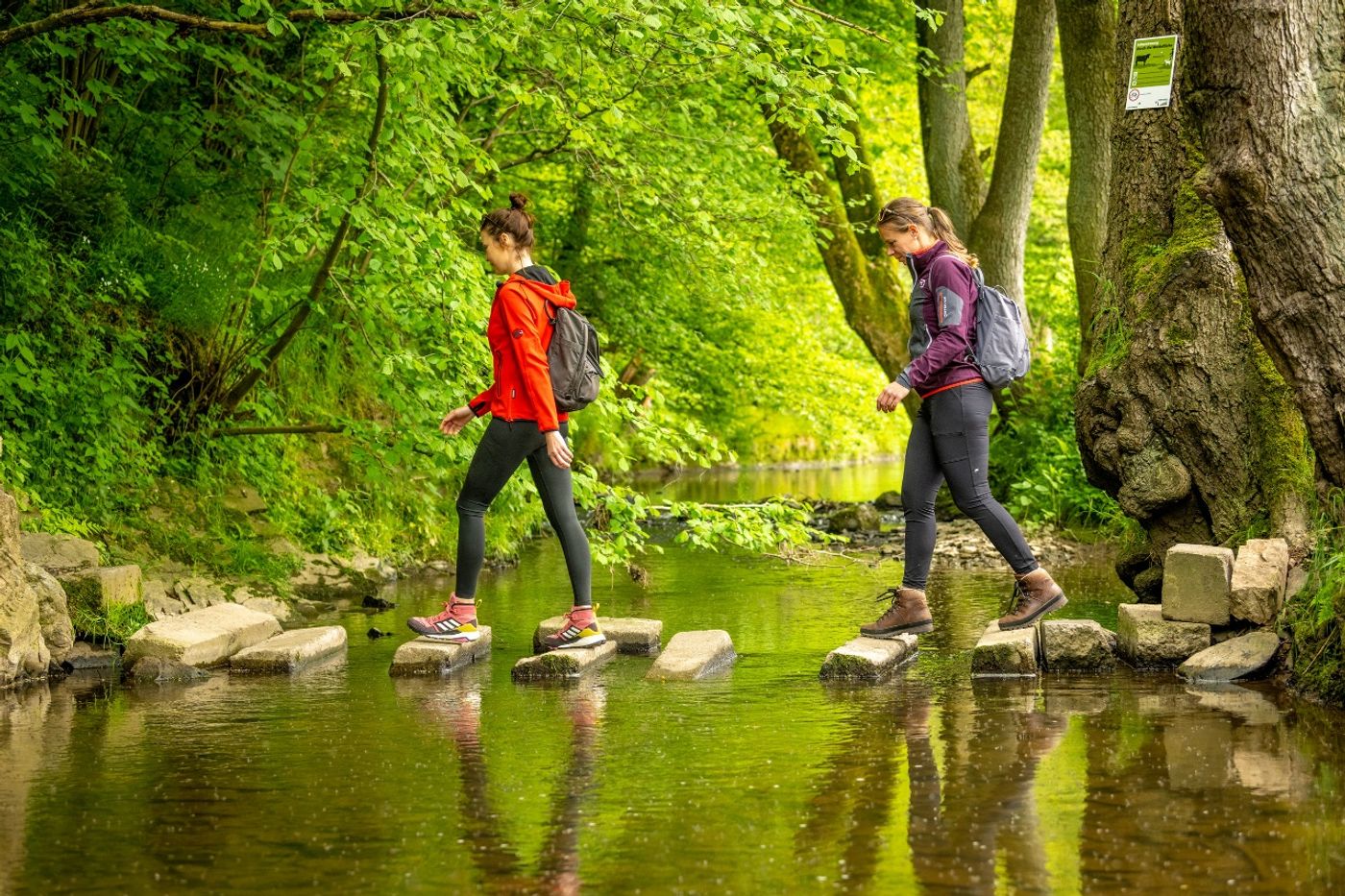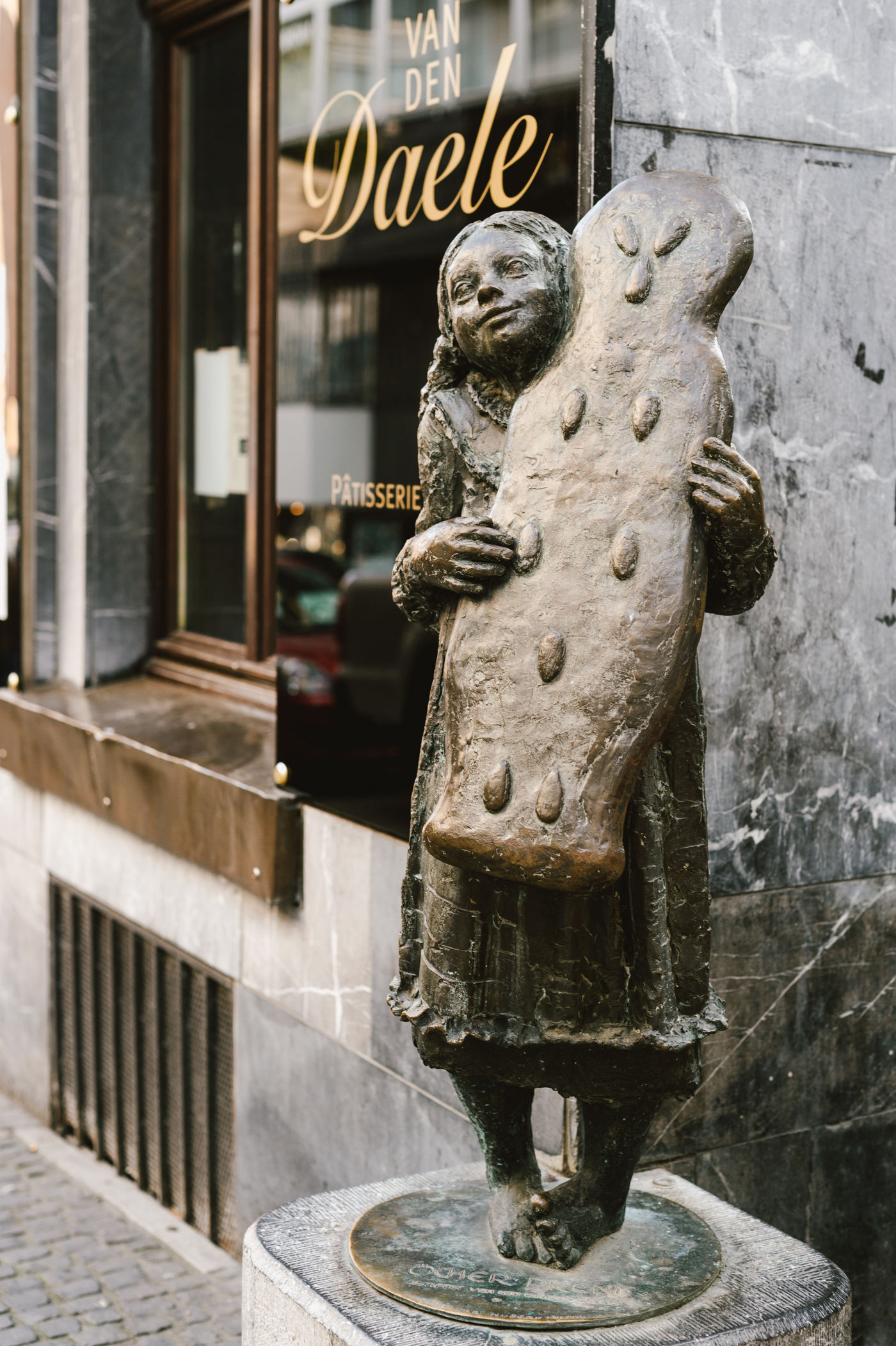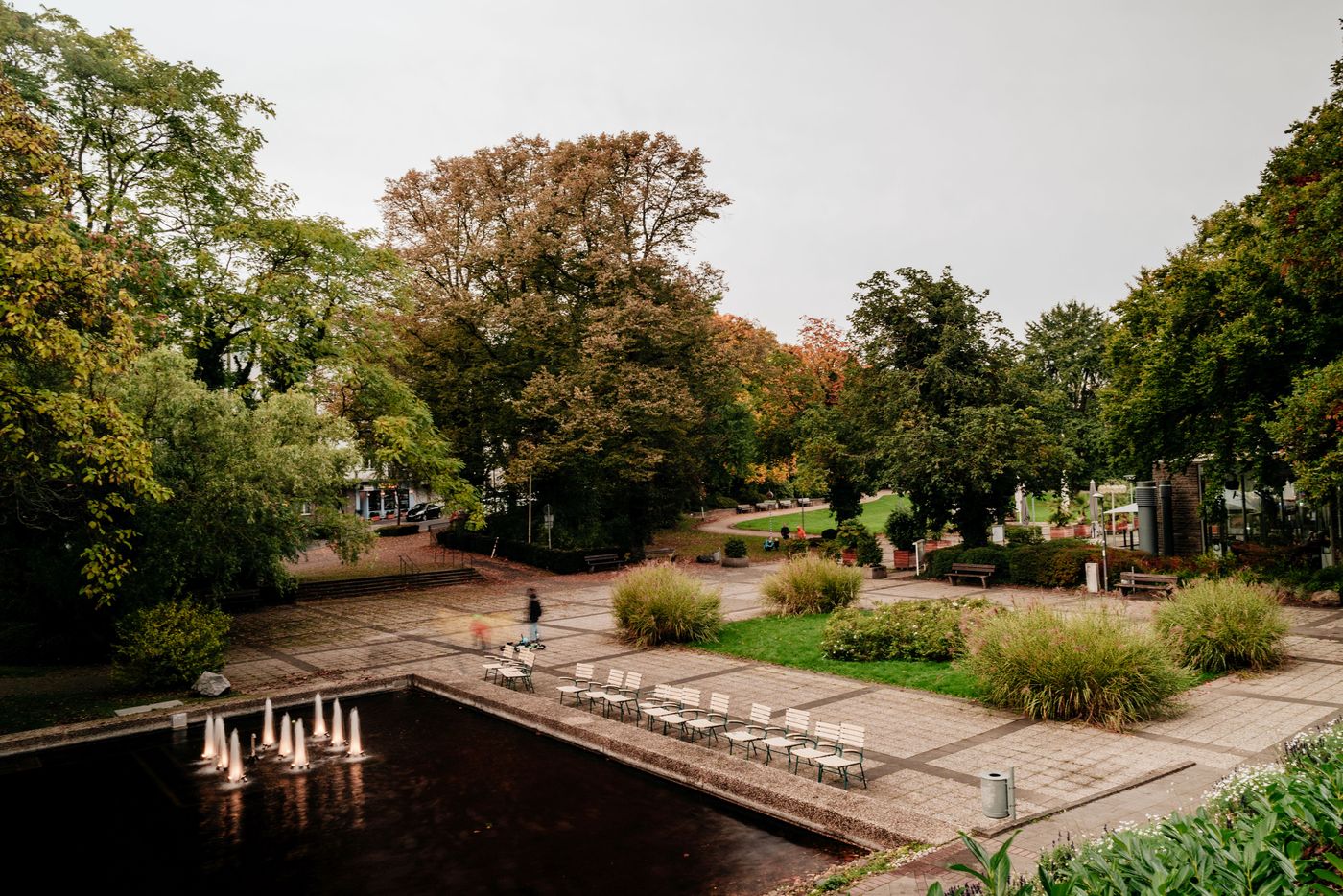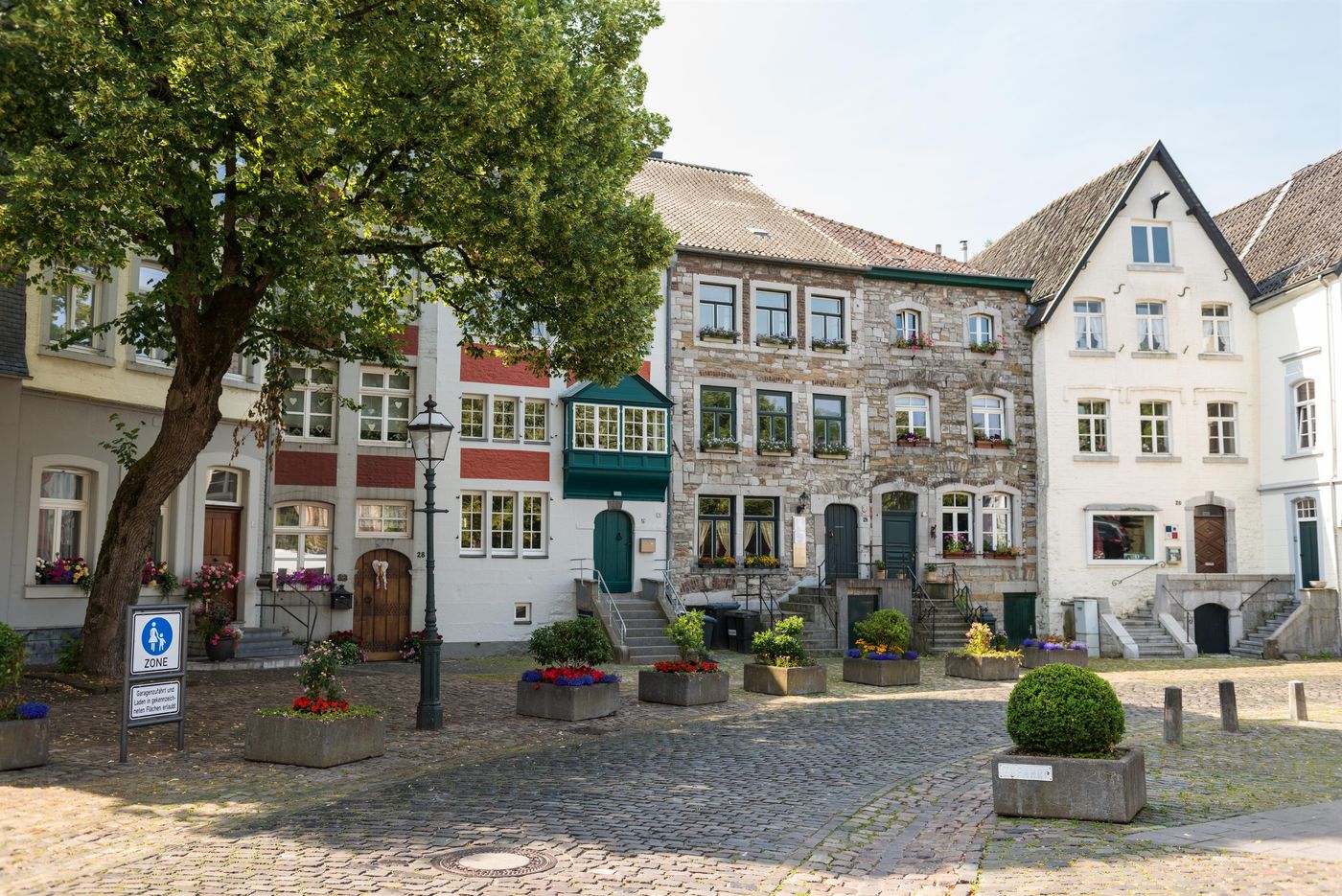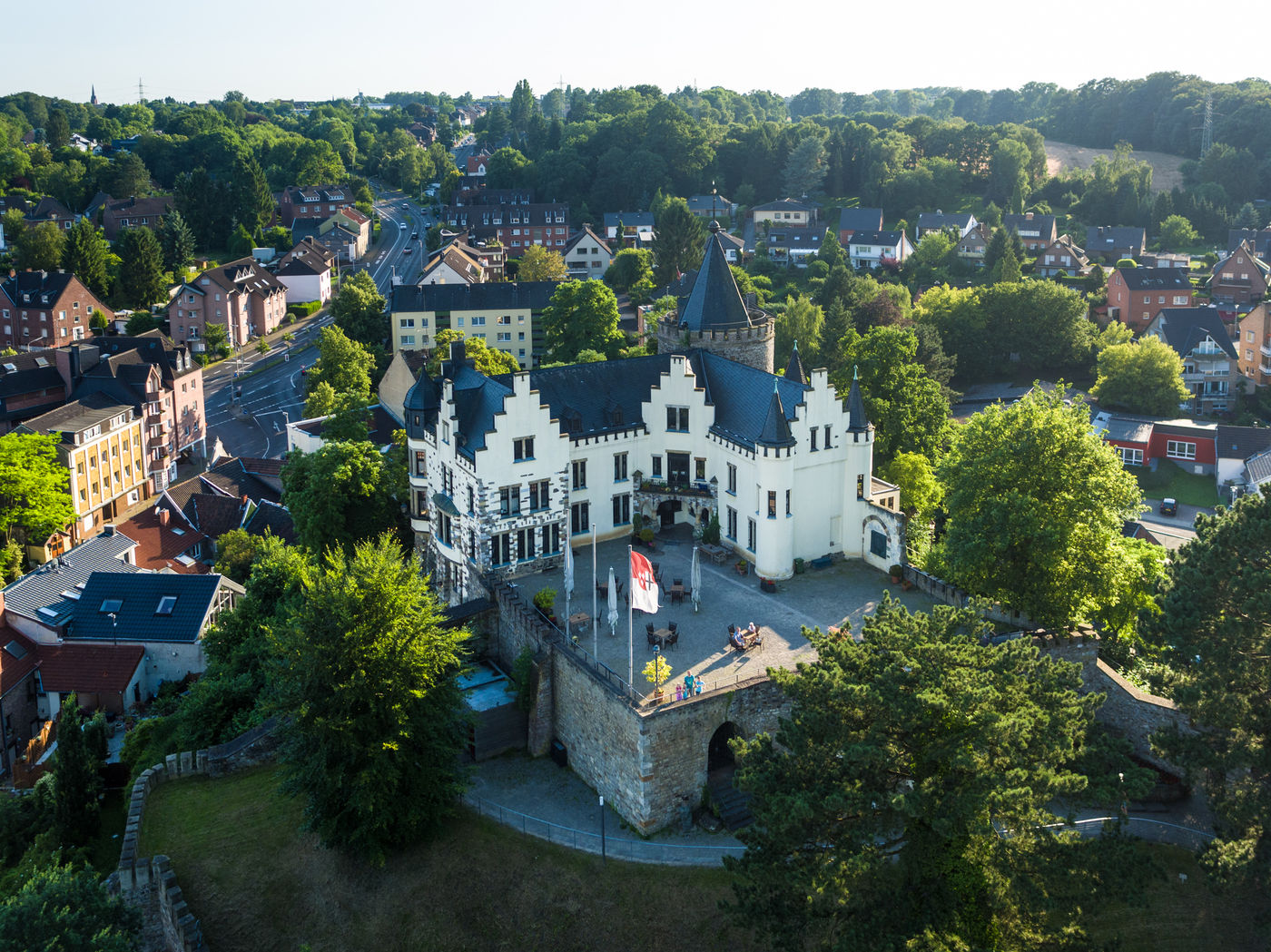Aachen
The Aachenrunde - a cake for cycling
Through the middle of the old town, we pass the Elisenbrunnen fountain, cathedral and town hall before driving through the secluded city garden. It was originally laid out in 1852 by Peter Josef Lené as the garden of a nearby Bürgerspittal and later became the core of the spa gardens.
At Europaplatz, surrounded by the highway ramp and industrial area, we immerse ourselves in a green oasis. Far away from residential areas and traffic, we follow the babbling Wurm. Bushes, trees, fish and, at the beginning, the smell of jam accompany us along the stream. On the way, we pass Gut Kalkofen, one of the many manorial estates in the rural urban area, whose roots go back to the Middle Ages.
The plain of the Soers opens up a vast old cultural landscape. The sale of some farms continues the tradition of the former Aachen quarter, which was already responsible for supplying the Palatinate and the city in the days of Emperor Charles. Like the defensive tower of Rahe, the defiant courtyard walls also contributed to the external defense of Aachen. In the 19th century, some of the estates, such as the Scheuer estate, developed into country residences for the local industrial aristocracy. At Rahe Castle, the representative building was equipped with a landscaped park in the 18th century.
Along the torrent, our next companion, grain mills and later fulling and cloth mills were built and their buildings and mill ponds have been preserved, as at Stockheider Mühle. In Seffent, too, it flows through the town's historic cultivated land. It is named after the septem fontes - seven springs - that find their way here from the Schneeberg. Seffent Castle with its surrounding square courtyards looks back on over 1,100 years of history as a royal court.
